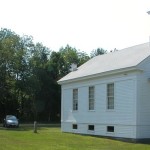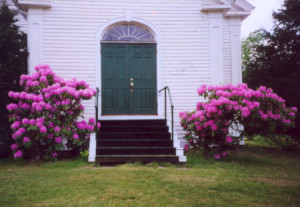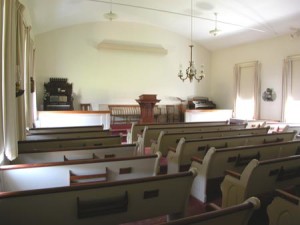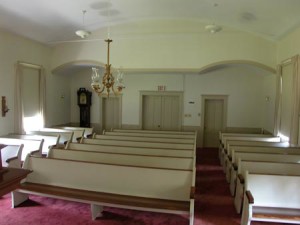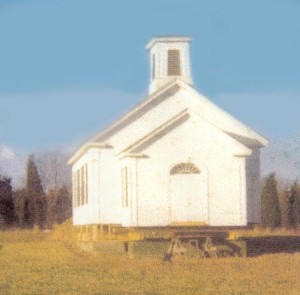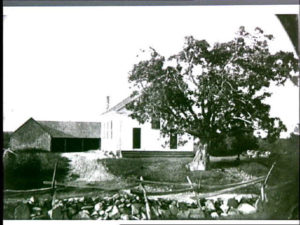This charming hall can be rented for various functions, and will seat 110. There is a large grassy area to the side of the meeting hall suitable for a reception tent.
History
The original Church property was won by a lottery ticket through a Catholic group. The Meeting Hall originally belonged to the Six Principle Baptist Church Conference, whose Principles are, Repentance, Faith, Baptisms, Laying on of hands, Resurrection of the dead, and Judgment and eternal life. East Greenwich history mentions Pardon Tillinghast, Deacon of the Frenchtown Seminary Baptist
Church.
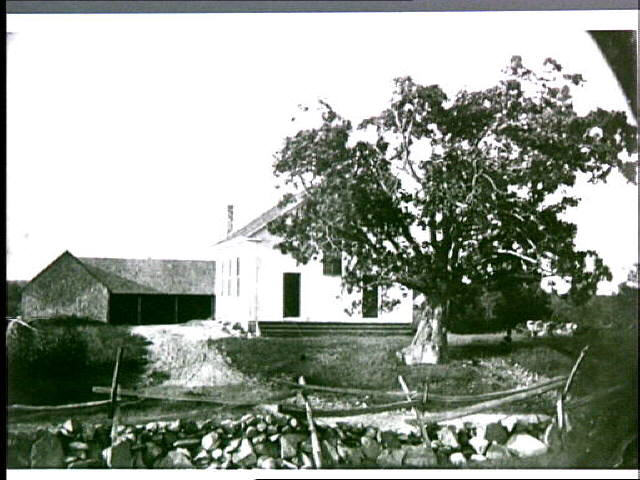
Frenchtown Baptist Church in its original form. A vestibule was added at a later date that covers the entrance doors and the upper center window. The two entrance doors still exist, but now go into storage rooms in each side of the vestibule. The upper center window also exists, but is boarded up inside of the attic of the vestibule.
From East Greenwich Public Library historic images.
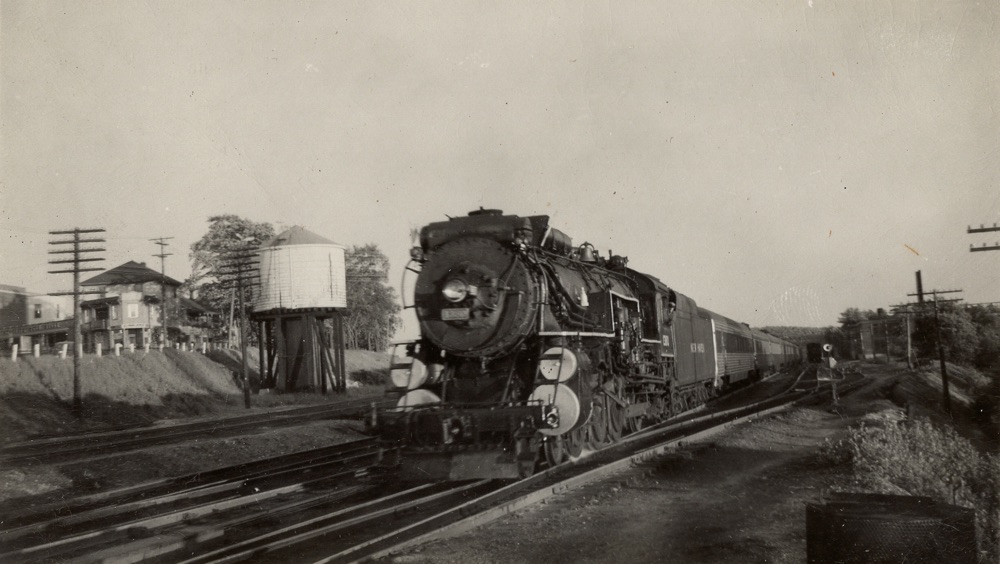 New Haven RR Engine 1380, Putnam CT. Rev. William Veikman obtained its bell for the church.
New Haven RR Engine 1380, Putnam CT. Rev. William Veikman obtained its bell for the church.
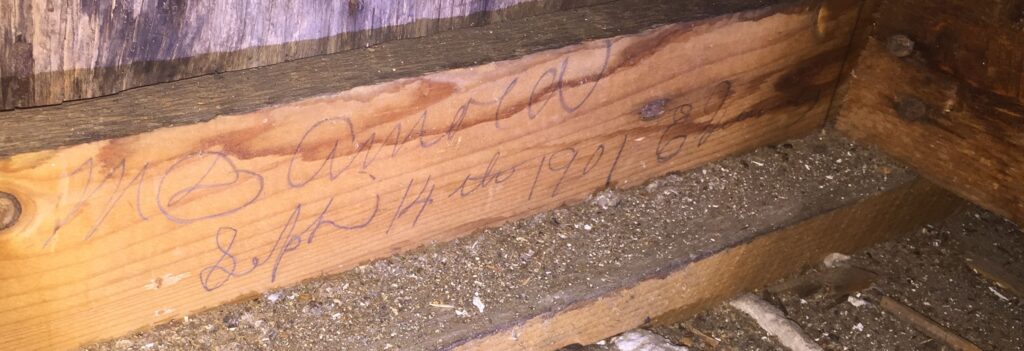
A signature on a beam in the attic of the vestibule of the Meeting House. It looks like “W.B. Arnold Sept 14th 1901”. This could be the date that the vestibule was added to the building. If you have any information on the person who made this signature we would add it here.
Moving and renovation
In 1972 this classic building was threatened with demolition when the Frenchtown Baptist Church was planning to tear it down. Marion Fry, once the president of the East Greenwich Preservation Society and president of the Town Council, persuaded them to donate it to the museum. She knew we needed a meeting hall, as well as a place for our growing electrical library.
The museum volunteers pitched in under the excellent supervision of Dick Hanson. He organized the electric and phone companies to cut the wires. The police and fire departments closed the road. The Seabees dug the cellar hole for the new foundation as a training exercise. Many private donors supplied other inevitable expenses.
In December 1972, when the building was sitting on bare studs over the new foundation, Marion said: “Let’s have a Carol Sing to celebrate.” The evening of the Sing, it was 9 degrees. Phil Lillibridge rigged his portable heaters in the yet-to-be-closed basement. The old church came alive with carols, but we sang in our coats and blankets and have been celebrating ever since.
Rev. William Veikman obtained its bell for the church.
